
Winter has set in and it is that time of the year when our body experiences tremendous changes in energy levels, metabolism and our food preference also changes. Winter is also the season which is full of colorful veggies and fruits in market. Our body needs extra vitamins and minerals to help combat cold weather, illness and to maintain your good health.
Let me share with you some nutritious food ideas that will help boost immunity and maintain energy levels through the day.
Here are 5 healthy dishes which will help you to keep warm on cold days-
- Millet Vegetable Pan Bread (Bajra Dudhi Thepla)
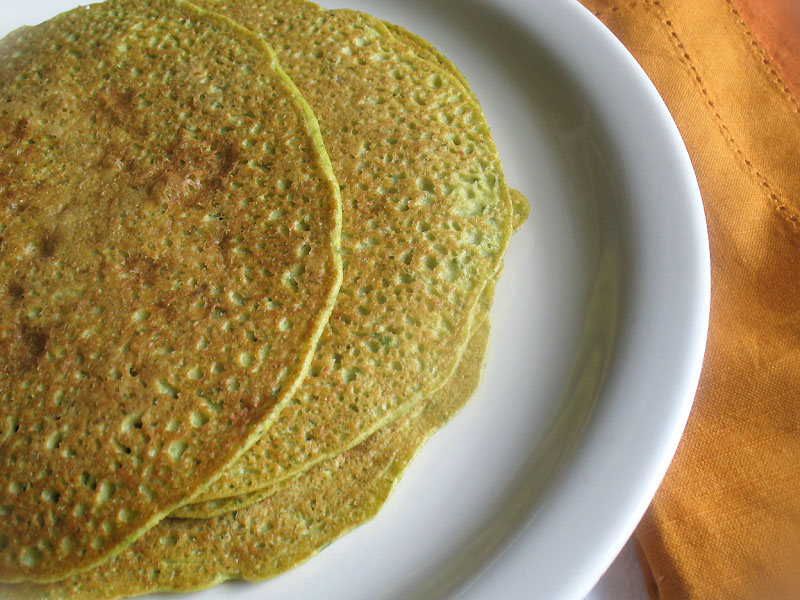
Ingredients–
- (Bajra) Millet flour – 1 cup
- Wheat flour – 1 cup
- Bottle gourd (Dudhi)- 1 cup (grated)
- Curd – ¹⁄₃ cup
- Oil – ½ cup (to add in flour and roast theplas)
- Green coriander – 2 tbsp (finely chopped)
- Green chilly – 1-2 (finely chopped)
- Ginger paste – 1 tsp
- Asafoetida – 1 pinch
- Cumin seeds – ½ tsp
- Red chilly powder – ¼ tsp
- Turmeric powder – ¼ tsp
- Sesame seeds – 1 tsp (optional)
- Salt – ½ tsp (as per taste)
Preparation
Take out millet flour in any big utensil. Mix wheat flour in the same bowl. Also add bottle gourd, ginger, green chilly, green coriander, Asafoetida, cumin seeds, red chilly powder, turmeric powder, sesame seeds, salt, 1 tbsp oil and curd. Add 1-2 tbsp water or as per requirement and knead soft dough. Keep aside the dough for 10-15 minutes so that it gets set.
Grease your hand with some oil and knead the dough. Pre-heat the pan (tawa). Take little amount of dough (lemon size) and make a round ball. Take one ball, dust it with dry flour and place it on rolling plate and roll into 6-7 inch diameter bread (thepla).
Place the rolled bread (thepla) on pre-heated pan (tawa) and when color of the bread (thepla) turns darker from surface then flip the side. Spread 1 tsp oil on the upper surface. Flip the side and spread some oil on this side as well. Roast the bread (thepla) on medium flame until it gets brown spots on both sides. Take it of the pan and place it in a plate.
Serve the Millet Vegetable pan bread (Bajra Lauki Theplas) with curd (yogurt), coriander paste or pickle or with any vegetables of your choice.
Suggestion: Mix finely chopped spinach in the flour for making Millet Spinach Breads (Bajra spinach thepla) and add finely chopped fresh fenugreek leaves for making millet fenugreek breads (bajra methi theplas).
- Winter special Fenugreek seeds and edible gum sweet balls
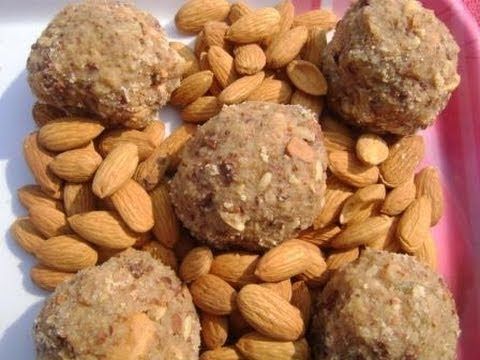
Fenugreek seeds gum balls is a traditional recipe which can also be used as an Ayurveda treatment for various ailments, especially during winters. These sweet gum balls are not only known for their medicinal properties but also taste delicious.
These are prepared with Fenugreek seeds mixed with wheat flour and Jaggery. New mothers can have these sweet balls as dietary supplement or to overcome any post-delivery problems. People suffering from joints pain, especially in winters, can have this sweet.
Ingredients-
- Fenugreek (methi) seeds – 100gms.
- Milk – ½ litre (2 ½ cup)
- Wheat flour – 300gm (1 ½cup)
- Ghee – 250gm (1 ½ cup)
- Edible gum (Gond) – 100gms (½ cup)
- Almonds – 30 to 35
- Black Pepper – 8 to 10
- Cumin powder – 2tsp
- Dry ginger – 2tsp
- Green Cardamom – 10 to 12
- Cinnamon – 4 pieces
- Nutmeg – 2
- Jageery – 1 ½ cup
Preparation:
Clean Fenugreek (Methi) seeds properly (wash seeds then put them in a thick cotton cloth and leave it in the sun to dry, cloth can be washed and used again). Put clean seeds in a mixer and make a thick paste somewhat similar to flour. Boil milk.
Put the grounded Fenugreek (Methi) in milk and let it soak for 8-10 hours.
Cut almonds into small pieces. Gently crush black pepper (break 1 pepper into 4-5 pieces), crush cinnamon and nutmeg into fine powder. Peel Cardamom (Elaichi) and crush it as well. Pour 1/2 cup clarified butter (Ghee) in a pan, fry soaked (Fenugreek) on a medium flame till it turns light brown and smells good. Remove the mixture in a plate.
Put the remaining clarified butter (Ghee) in the pan and heat, fry Edible gum (Gond) and take it out on a plate (fry Gond on a law flame). Fry flour in leftover Ghee in the pan till it becomes light brown then take it out.
Put 1 tsp clarified butter in the pan followed by the pieces of Jaggery (Gur), melt Jageery (Gur) into liquid form (Chashni) on a low flame. Add Cumin (Jeera) powder, Dry Ginger (Sauntth) powder, cut almonds, black pepper, cinnamon, nutmeg, Cardamom in the Liquid syrup of Jageery and mix well.
Take little amounts of the mixture, shape it into small balls similar to a lemon and put it on a plate. Keep Fenugreek seeds and edible gum sweet balls (Methi Ladoos) in open air for 4-5 hours.
The sweet is ready, keep them in an air tight container and eat one sweet ball every morning or evening with warm milk. This prevents pain in joints, back and pain due to the cold.
- CARROT CAKE SNACKS BITE

Ingredients-
- 2 ¼ cups shreddedcarrots
- ¾ cup dates (about 10 large dates)
- ²⁄₃ cup coconut (shredded or flaked)
- ½ cup walnuts
- ½ cup sunflower seeds
- 1 teaspoon cinnamon
- ¼ teaspoon ground ginger
- ¹⁄₈ cup toasted sesame seeds
- ¹⁄₈ cup shredded coconut
- ¹⁄₈ cup chopped almonds
Preparation
In a food processor, blend all the snack bite ingredients together. Scoop out full grinded mixture in a bowl and roll it into a ball.
Roll the balls in sesame seeds, coconut, or chopped almonds for additional crunch. Use the listed optional ingredients to determine the amount of sesame seeds, coconut, or almonds you need.
Store refrigerated or in an air tight container.
- Spinach with Chickpeas Green Salad
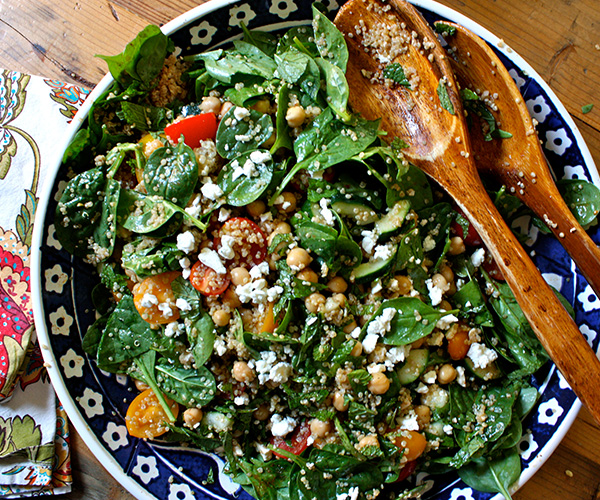
Ingredient–
- 1 tablespoon extra-virgin olive oil
- 4 cloves garlic, minced
- ½ onion, diced
- 300g frozen spinach, thawed and drained well
- 400g tin chickpeas and green peas, drained and boiled.
- ½ teaspoon cumin
- ½ teaspoon salt
Preparation: Take 400 gm of chickpeas and green peas in a pressure cooker. Add half a litre water to it and cook till 4 whistle blow. Let it cool for some time. Heat the olive oil in a frying pan over medium-low heat. Add and cook the garlic and onion in the oil until they turn translucent, for about 5 minutes. Add and stir in the spinach, chickpeas, green peas, cumin and salt. Use your stirring spoon to lightly mash the beans as the mixture cooks. Allow to cook until it gets thoroughly heated. Serve it hot.
- Green Greek Smoothies
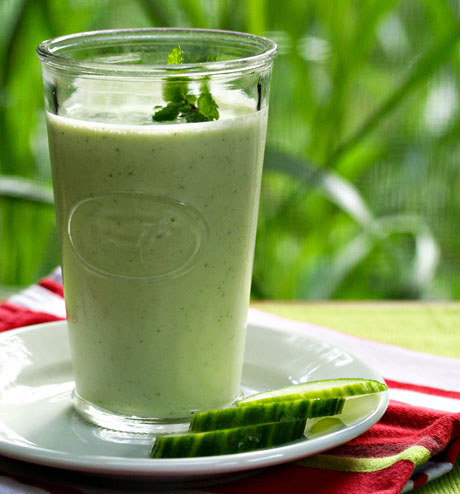
Ingredients-
- Cup freshly cut pieces of kiwi
- A bowl of Greek yogurt
- ½ cup of milk
- Pinch of grounded cardamom
- 1 tsp of (water) soaked chia seeds
- Fresh Mint Leaves
In a blender, place kiwi, yogurt and milk and blend it for about 1 minute or until smooth. Pour it into a glass, and sprinkle with cardamom. Garnish with mint leaves and add 1 tsp of soaked chia seed on it. Serve immediately.
Tip – You can also try other winter fruits and veggies – like oranges, apple, spinach, Beets instead of Kiwi.
Try these healthy and delicious winter warming recipes. And, don’t let the cold weather keep you from enjoying fresh homemade foods. Let’s Enjoy! For more healthy recipes, check out Healthy Reads or ask a GOQii Coach by subscribing for Personalised Health Coaching here.
#BeTheForce

 “Superfoods” are foods that have a substantial amount of nutrients and very few calories. They contain a high volume of minerals, vitamins, and antioxidants. But, do winter superfoods really exist?
“Superfoods” are foods that have a substantial amount of nutrients and very few calories. They contain a high volume of minerals, vitamins, and antioxidants. But, do winter superfoods really exist? 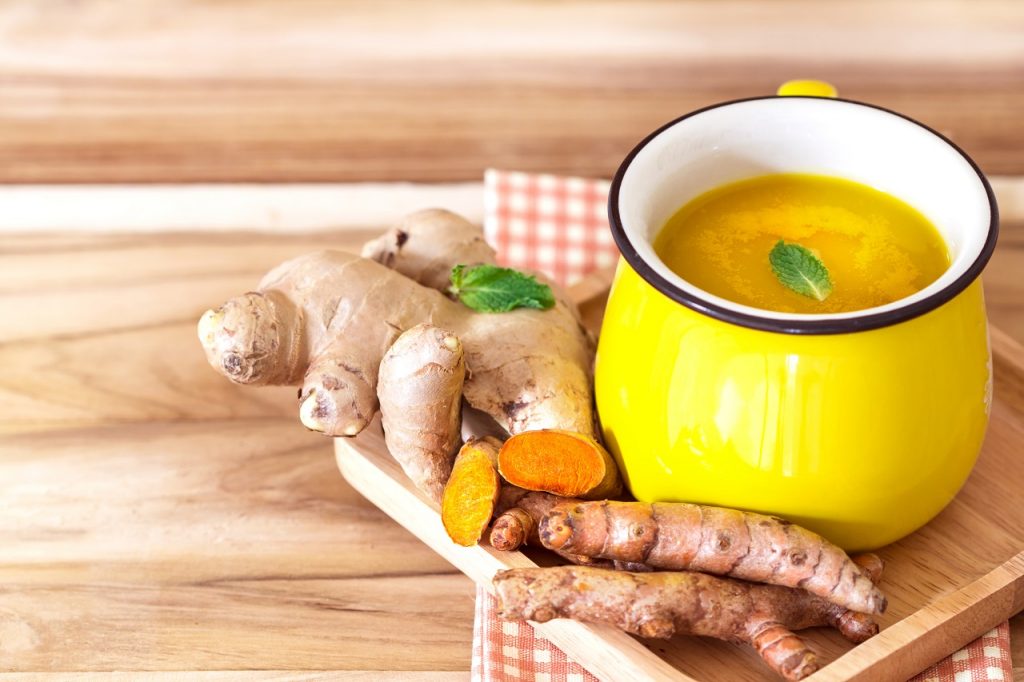 Inflammation is linked with so many serious illnesses such as diabetes, heart diseases, asthma, arthritis, etc. The use of anti-inflammatory drugs is very common and sometimes with no alternative as well. As they say, prevention is always better than cure! Eating anti-inflammatory food is a natural solution without any side effects. During winter, there’s less flow of blood which makes the joints colder and stiffer – leading to inflammation. The pain receptors become more sensitive in winters which result in pain, swelling in joints and other parts of the body.
Inflammation is linked with so many serious illnesses such as diabetes, heart diseases, asthma, arthritis, etc. The use of anti-inflammatory drugs is very common and sometimes with no alternative as well. As they say, prevention is always better than cure! Eating anti-inflammatory food is a natural solution without any side effects. During winter, there’s less flow of blood which makes the joints colder and stiffer – leading to inflammation. The pain receptors become more sensitive in winters which result in pain, swelling in joints and other parts of the body.


